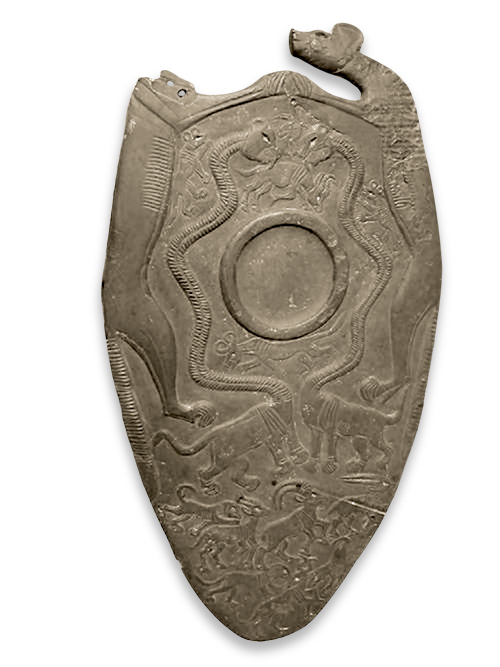Serpopard on:
[Wikipedia]
[Google]
[Amazon]

 3000 BC cylinder seal of Uruk with serpopard design.">Uruk.html" ;"title="cylinder seal of Uruk">cylinder seal of
3000 BC cylinder seal of Uruk with serpopard design.">Uruk.html" ;"title="cylinder seal of Uruk">cylinder seal of
n art. The word "serpopard" is a modern coinage. It is a portmanteau of "Serpent (symbolism), serpent" and "leopard", derived from the interpretation that the creature represents an animal with the body of a leopard and the long neck and head of a serpent. However, they have also been interpreted as "serpent-necked lions". There is no known name for the creature in any ancient texts.
good images of Narmer Palette
by Francesco Rafaele {{Ancient Egyptian religion footer Legendary creatures in Egyptian mythology Ancient Egyptian palettes Mythological hybrids Legendary serpents

 3000 BC cylinder seal of Uruk with serpopard design.">Uruk.html" ;"title="cylinder seal of Uruk">cylinder seal of
3000 BC cylinder seal of Uruk with serpopard design.">Uruk.html" ;"title="cylinder seal of Uruk">cylinder seal of mythical animal known from Art of ancient Egypt">ancient Egypt
Ancient Egypt () was a cradle of civilization concentrated along the lower reaches of the Nile River in Northeast Africa. It emerged from prehistoric Egypt around 3150BC (according to conventional Egyptian chronology), when Upper and Lower E ...
ian and Art of Mesopotamia">Mesopotamia
Mesopotamia is a historical region of West Asia situated within the Tigris–Euphrates river system, in the northern part of the Fertile Crescent. Today, Mesopotamia is known as present-day Iraq and forms the eastern geographic boundary of ...Images
The image is featured specifically on decorated cosmetic palettes from the Predynastic period of Egypt, and more extensively, as design motifs on cylinder seals in the Protoliterate period of Mesopotamia (circa 3500–3000 BC). Examples include the Narmer Palette and the Oxford Palette. The cylinder seal of Uruk (image above) displays the motif very clearly. Typically, two creatures are depicted, with their necks intertwined.Interpretations
The image generally is classified as a feline, and with close inspection resembles an unusually long-neckedlion
The lion (''Panthera leo'') is a large Felidae, cat of the genus ''Panthera'', native to Sub-Saharan Africa and India. It has a muscular, broad-chested body (biology), body; a short, rounded head; round ears; and a dark, hairy tuft at the ...
ess. It bears the characteristic tuft of the species at the end of the tail, there are no spots, the round-eared head most closely resembles the lioness rather than a serpent, because serpents do not have ears, and there are no typical serpent features such as scales, tongue, or reptilian head shape.
It has been suggested that in Ancient Egyptian art the serpopard represents "a symbol of the chaos that reigned beyond Egypt's borders", which the king must tame. They are normally shown conquered or restrained, as in the Narmer Palette, or attacking other animals. But in Mesopotamian art they are shown in pairs, with intertwined necks.
Mesopotamian use of these "serpent-necked lions" and other animals and animal hybrids is seen by some scholars as "manifestations of the chthonic aspect of the god of natural vitality, who is manifest in all life breaking forth from the earth".
Similarly to other ancient peoples, the Egyptians are known for their accurate depictions of the creatures they observed. Their composite creatures have recognizable features of the animals originally representing those deities
A deity or god is a supernatural being considered to be sacred and worthy of worship due to having authority over some aspect of the universe and/or life. The ''Oxford Dictionary of English'' defines ''deity'' as a God (male deity), god or god ...
, merged into novel creatures.
Lionesses played an important role in the religious concepts of both Upper and Lower Egypt
Lower Egypt ( ') is the northernmost region of Egypt, which consists of the fertile Nile Delta between Upper Egypt and the Mediterranean Sea, from El Aiyat, south of modern-day Cairo, and Dahshur. Historically, the Nile River split into sev ...
, and are likely to have been designated as animals associated with protection and royalty. The long necks could be a simple exaggeration, used as a framing feature in an artistic motif, either forming the cosmetic-mixing area, as in the Narmer Palette, or surrounding it, as in the Small Palette.
Depictions of similar fantastic animals also are known from Elam and Mesopotamia
Mesopotamia is a historical region of West Asia situated within the Tigris–Euphrates river system, in the northern part of the Fertile Crescent. Today, Mesopotamia is known as present-day Iraq and forms the eastern geographic boundary of ...
,Michael Rice, ''Egypt's Making: The Origins of Ancient Egypt, 5000-2000 BC'', Routledge 2003, p.68 as well as many other cultures.
In popular culture
* The Serpopards appear in '' The Kane Chronicles'' book '' The Red Pyramid''. Two Serpopards were sent by Set to attack Philip of Macedonia, Sadie Kane, Carter Kane, and Khufu. They were defeated by Bast. * A serpopard has appeared in the card game '' Magic: The Gathering'' in the Egyptian-themed world of Amonkhet. Its creature type is "cat snake" and it has outright serpentine traits not seen in ancient depictions. * A serpopard attacks Malik and Karina in the necropolis beneath Ksar Alahari in '' A Song of Wraiths and Ruin'' by Roseanne A. Brown.See also
* Questing Beast * QilinReferences
*O’Connor, David 2002. Context, function and program: understanding ceremonial slate palettes. ''Journal of the American Research Center in Egypt'' 39: 5–25.External links
good images of Narmer Palette
by Francesco Rafaele {{Ancient Egyptian religion footer Legendary creatures in Egyptian mythology Ancient Egyptian palettes Mythological hybrids Legendary serpents